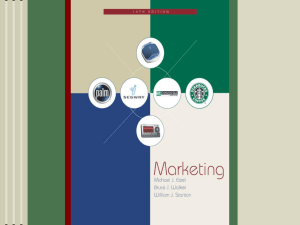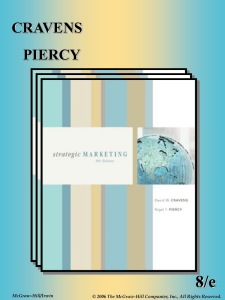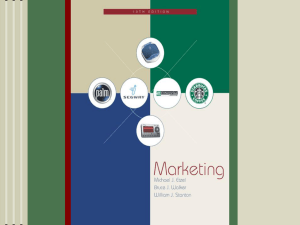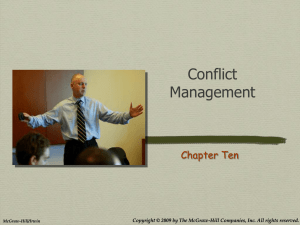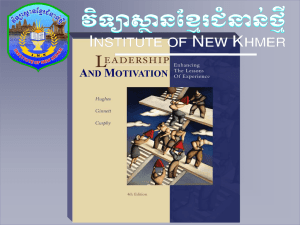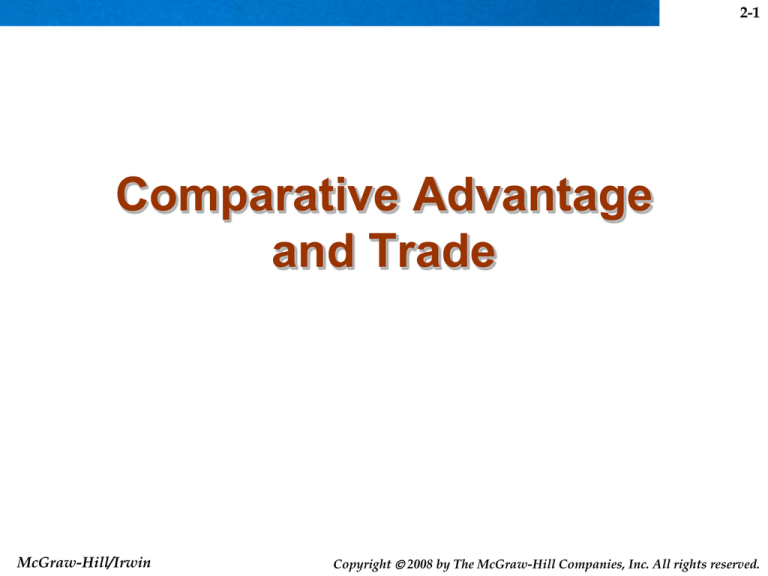
2-1
Comparative Advantage
and Trade
McGraw-Hill/Irwin
Copyright 2008 by The McGraw-Hill Companies, Inc. All rights reserved.
2-2
Economic Growth In the
Past Two Thousand Years
Per capita income
(in 1990 dollars)
$6,000
$5,000
$4,000
WHY?
$3,000
$2,000
$1,000
0
McGraw-Hill/Irwin
500
1000
1500
2010
Copyright 2008 by The McGraw-Hill Companies, Inc. All rights reserved.
2-3
The Economics of Babe Ruth
McGraw-Hill/Irwin
Copyright 2008 by The McGraw-Hill Companies, Inc. All rights reserved.
2-4
Babe Ruth Statistics
• Boston Red Sox Pitcher
1915
18-8
2.44
1916
23-12
1.75*
1917
24-13
2.01
1918
13-7
2.22
New York Yankee Right Fielder
1918
11*
.300
1920
54*
.376
1923
41*
.393*
1927
60*
.356
McGraw-Hill/Irwin
*Means
led the
league
Copyright 2008 by The McGraw-Hill Companies, Inc. All rights reserved.
2-5
Comparative Advantage
• Comparative Advantage—the relatively
•
most productive use of a resource
Hitting was the Babe’s comparative
advantage
Very good pitcher—played every 4-5 days
Great hitter—played every day and changed
the game forever
• Specialized—pitched a total of only 5
games after 1919
McGraw-Hill/Irwin
Copyright 2008 by The McGraw-Hill Companies, Inc. All rights reserved.
2-6
Textiles
(in thousands of yards)
Production Possibilities
Without Trade
Production Possibilities Curves
for Pakistan and Belgium
5
4 D
3
2
What does each country do
Pakistan
best? Hint: Think opportunity
A
costs.
1
Belgium
B
E
1
2
3
Chocolate (in tons)
McGraw-Hill/Irwin
4
Copyright 2008 by The McGraw-Hill Companies, Inc. All rights reserved.
2-7
Textiles
(in thousands of yards)
Specialization and Trade
How could they get to point C where each
country can consume 2,000 tons of fabric
and 2 tons of chocolate?
5
4 D
Pakistan
3
2
A
1
C
Belgium
B
E
1
2
3
Chocolate (in tons)
McGraw-Hill/Irwin
4
Copyright 2008 by The McGraw-Hill Companies, Inc. All rights reserved.
2-8
Textiles
(in thousands of yards)
Specialization and
Comparative Advantage
For Pakistan the opportunity cost of one ton of chocolate
is 4000 yards of textiles.
5
For Belgium the opportunity cost of one ton of chocolate
is 250 yards of textiles.
4 D
Pakistan
3
2
A
1
C
Belgium has the comparative advantage in chocolate
and specializes producing 4 tons (point E). Pakistan
has the comparative advantage in textiles and
specializes producing 4000 yards (point D).
Belgium
B
E
1
2
3
Chocolate (in tons)
McGraw-Hill/Irwin
4
Copyright 2008 by The McGraw-Hill Companies, Inc. All rights reserved.
2-9
Comparative Advantage and
the Combined PPC
Textiles
(in thousands of yards)
5 F (0,5)
The combined PPC is the curve
connecting points F, H, and G.
4
H
(4,4)
Pakistan
3
.
2
Note how much more they can
have if they specialize and trade
C (2,2)
Belgium
1
G (5,0)
1
McGraw-Hill/Irwin
2
3
4
Chocolate (in tons)
5
Copyright 2008 by The McGraw-Hill Companies, Inc. All rights reserved.
2-10
U.S. Textile
Production and Trade
• Two hundred years ago, the U.S. had a
•
•
comparative advantage in textile
production.
Now countries with cheaper labor, such
as Bangladesh, have the comparative
advantage in textiles.
The gains from trade are higher wages for
workers in Bangladesh and lower-priced
cloth for U.S. consumers.
McGraw-Hill/Irwin
Copyright 2008 by The McGraw-Hill Companies, Inc. All rights reserved.
2-11
Comparative Advantage Review
Suppose that the U.S. can produce 100 computer chips
or 100 video games in one hour. Japan can produce 40
computer chips or 80 video games in one hour.
What is the opportunity cost of computer chips in each
country?
In which product should each country
specialize?
The U.S. is more efficient in producing both computer
chips and video games. Can the U.S. benefit by trading
with Japan?
McGraw-Hill/Irwin
Copyright 2008 by The McGraw-Hill Companies, Inc. All rights reserved.
2-12
In the U.S. the opportunity cost of 1 video game is 80/80
= 1 computer chip.
In Japan the opportunity cost of 1 computer chip is 80/40
= 2 video games.
U.S. should specialize in computer chips.
Produces 100 per hour
Japan should specialize in video games.
Produces 80 per hour
They agree to trade 1 computer chip for 1.5 video games
U.S. gets video games for 2/3 of a computer chip
Japan gets computer chips for 1.5 video games
Both countries have reduced their opportunity costs
McGraw-Hill/Irwin
Copyright 2008 by The McGraw-Hill Companies, Inc. All rights reserved.
2-13
Comparative Advantage and
Outsourcing
• Outsourcing : The relocation of production once
done in the U.S. to foreign countries.
•
Outsourcing occurs because of comparative
advantage
•
What is the comparative advantage of countries such as India
and China?
What is the comparative advantage of the U.S.?
What economic activities are being outsourced?
McGraw-Hill/Irwin
Copyright 2008 by The McGraw-Hill Companies, Inc. All rights reserved.
2-14
Globalization
• Globalization: The increasing
integration of economies, cultures,
and institutions across the world.
• The positive effect of globalization is
that it provides larger markets than the
domestic economy.
• The negative effect is that it results in
increased competition.
McGraw-Hill/Irwin
Copyright 2008 by The McGraw-Hill Companies, Inc. All rights reserved.
2-15
Law of One Price
• Wages of similar workers in one country
will not differ significantly from the wages
of workers in another institutionally
similar country.
• If the U.S. loses its comparative advantage
based on technology and institutional
structure, U.S. wages will decrease
relative to wages in many other countries.
McGraw-Hill/Irwin
Copyright 2008 by The McGraw-Hill Companies, Inc. All rights reserved.

